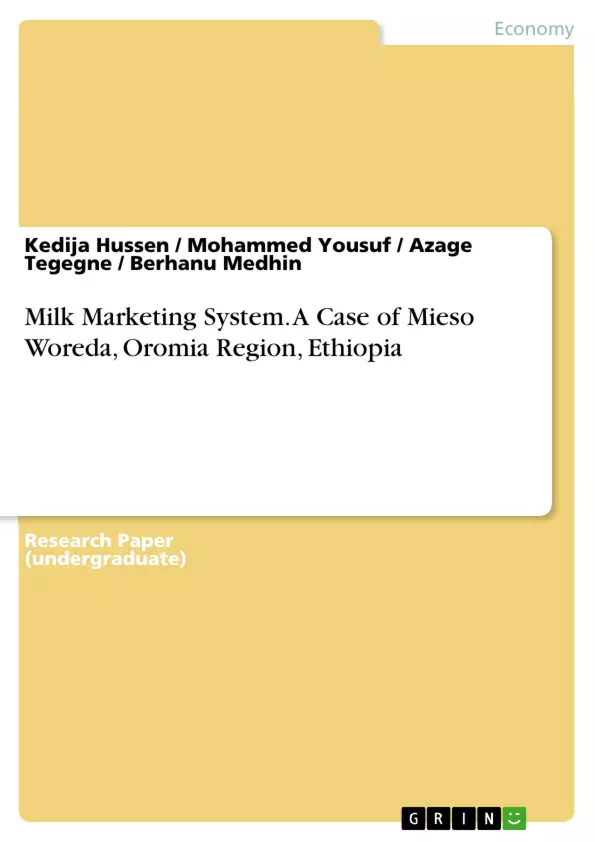The study was conducted in Mieso district of Oromia region, Ethiopia. The study was undertaken with the objective to characterize milk marketing system and to forward appropriate intervention in the area. The data was collected based on group discussion with key informants and then using pre-tested questionnaire administered to randomly selecting milk producer from randomly selected rural Kebeles. Two market places were selected purposively. The result indicates that all milk animals are indigenous cattle, camel and goats. There were generally two types of milk outlets identified in the district. These are traditional milk associations or groups and individual sellers. The traditional milk producer association group is locally called Faraqa Annanni. From a total of 94 households that sold milk during the study, only 22 (23 %) households were involved in the milk seller groups.
Inhaltsverzeichnis (Table of Contents)
- INTRODUCTION
- MATERIAL AND METHODS
- Sampling Procedures
- Data Collection Methods
- Analytical Techniques
Zielsetzung und Themenschwerpunkte (Objectives and Key Themes)
This study conducted in Mieso district, Oromia region, Ethiopia, aims to characterize the milk marketing system and to propose suitable interventions. Data was collected through group discussions with key informants and questionnaires administered to randomly selected milk producers.
- Milk marketing system in Mieso district, Oromia region, Ethiopia
- The role of traditional milk associations (Faraqa Annanni) in milk marketing
- Factors influencing household participation in milk sales
- Potential interventions to improve the milk marketing system
- The impact of milk sales on market orientation
Zusammenfassung der Kapitel (Chapter Summaries)
- INTRODUCTION: This chapter provides a general overview of Ethiopia's livestock sector and the potential for dairy development. The chapter discusses the importance of a vibrant dairy sub-sector for the economic development of Ethiopia and the increasing demand for animal products due to population growth and urbanization.
- MATERIAL AND METHODS: This chapter details the methodology used in the study, including sampling procedures, data collection methods, and analytical techniques. The chapter describes the purposive sampling of rural kebeles, the use of Proportional Probability to Size (PPS) approach for selecting farmers, and the application of various statistical methods to analyze the data.
Schlüsselwörter (Keywords)
The study focuses on the milk marketing system, milk production, dairy animals, traditional milk associations, market participation, market orientation, and dairy development in Ethiopia.
- Quote paper
- Kedija Hussen (Author), Mohammed Yousuf (Author), Azage Tegegne (Author), Berhanu Medhin (Author), 2008, Milk Marketing System. A Case of Mieso Woreda, Oromia Region, Ethiopia, Munich, GRIN Verlag, https://www.grin.com/document/490840



